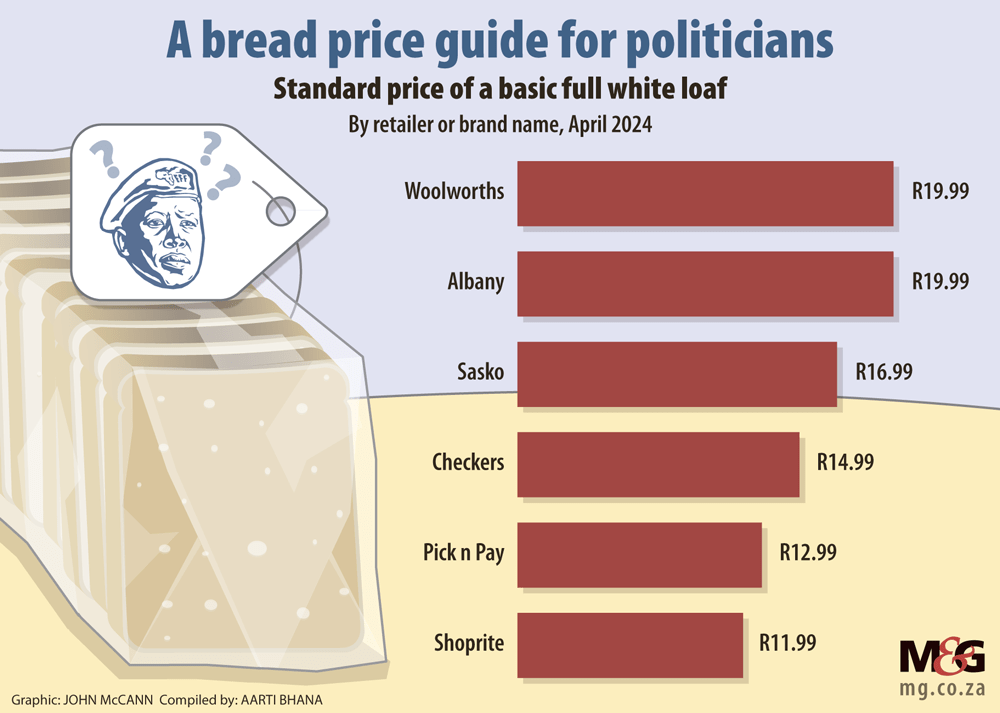The cost of living in South Africa is increasing and it is hurting consumers’ pockets everywhere. Photo: Getty Images
A South African politician, notorious for making controversial statements, said something last week that had the nation talking.
In an interview with broadcaster and journalist Lester Kiewit on Cape Talk, EFF leader Julius Malema said he did not know the price of a loaf of bread because he was “not in the position” where he has to buy it.
Unfortunate, perhaps, for a politician seeking to fight for the economic freedom of South Africans.
The cost of living in South Africa is increasing and it is hurting consumers’ pockets everywhere, and it’s something every politician should care about.
Let’s break it down:
In February, consumer inflation edged up to 5.6% year-on-year while prices rose by 1.0% on a monthly basis. The main contributors to the year-on-year change were miscellaneous goods and services, which rose 8.4%, as well as food and non-alcoholic beverages (6.1% y/y), transport (5.4% y/y) and housing and utilities (5.8% y/y).
The cost of food has become particularly concerning.
South Africa’s Crop Estimate Committee (CEC) forecasts summer grain and oilseeds for the March 2023/24 period to be 9% lower than February and 21% lower than last season’s harvest. Chief economist of the Agricultural Business Chamber of South Africa Wandile Sihlobo said unfavourable weather conditions across the country are likely the reason for the poor harvests.
In a statement published on 26 March, Sihlobo noted that white and yellow maize harvests could decline 20% year on year, while soybean harvests are estimated to fall 35% year on year and sunflower seed harvests are likely to fall 18% year on year.
But there are some favourable supplies in the grain department, which includes wheat (the main ingredient when making bread.)
In the statement, Sihlobo notes:
“From a consumer perspective, the drought presents upside risks to food price inflation. But the major issue is white maize. The favourable supplies of other grains in the world market, mainly yellow maize (also rice and wheat), and the moderating prices mean South Africa could be slightly cushioned in these commodities.”
However, according to Statistics South Africa, the average price of a 700g loaf of white bread hovered around the R18 mark from February 2023 to February 2024.
The price of a 700g brown bread loaf averaged between R16 and R17 for the same period.
We take a closer look at the standard price of a full loaf of basic white bread in South Africa in April so far.
 (Graphic: John McCann/M&G)
(Graphic: John McCann/M&G)
Although grain supplies seem stable for now, as Sihlobo noted, GrainSA issued a warning about how severe droughts and ongoing heatwaves are likely to spell trouble for grain producers.
In a statement published on 13 March, the organisation said “the scorching temperatures and prolonged dry spells have ravaged agricultural lands, severely impacting both developing and commercial producers”.
This is something all South Africans, including Malema, should care about.
As the South African Reserve Bank said in its February 2024 Monetary Policy Committee statement: “Regarding food prices, we are at a difficult juncture. Last year, food inflation hit its highest levels since 2008. Food inflation has now slowed. But this is a critical time in the growing season, and it has been unusually hot and dry, which may cause food inflation to pick up again.”